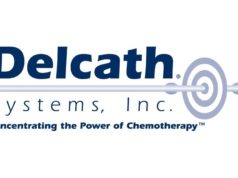Percutaneous hepatic perfusion with melphalan for the treatment of metastatic uveal melanoma (mUM) offers a hepatic response rate of 66.7% and good progression-free survival (PFS). This is the main concluding finding of a recent retrospective analysis published in Melanoma Research—which the authors claim includes the largest number of mUM patients treated in a single centre with melphalan percutaneous hepatic perfusion (M-PHP) to date worldwide.

Carrying a poor prognosis, uveal melanoma (UM) is the most common primary ocular malignancy in adults, according to Sachin Modi and Brian Stedman (University Hospital Southampton NHS Foundation Trust, Southampton, UK) et al. 50% of patients with UM develop metastatic disease, which has a 10‒25% one-year survival rate with no standard established treatment. According to the authors, previous studies have demonstrated M-PHP to be effective for mUM for liver predominant disease, however, it is highlighted that existing research is limited by small sample populations. Modi et al specify that their analysis, therefore, illustrates findings on the safety and efficacy of M-PHP in a sample population of 83 patients, which is the largest number of mUM patients treated in a single centre with M-PHP to date worldwide.

All patients with diagnosed mUM who received M-PHP between August 2012 and September 2020 at the University Hospital Southampton NHS Foundation Trust were included in this retrospective study.
Patients with the non-progressive single-site extrahepatic disease were also included. All patients received 3mg/kg of melphalan, which was delivered with the Hepatic CHEMOSAT Delivery System (Delcath Systems) with the GEN 2 filter (see Figure 1). The authors note that liver function and full blood count were monitored in all patients’ weekly following treatment, with repeat computerised tomography (CT) and magnetic resonance imaging (MRI) every six to 12 weeks to monitor the tumour and overall response, as per RECIST guidelines. The disease control rate (DCR) was calculated as the proportion of patients with complete response (CR) to treatment, partial response (PR), or stable disease (SD) for at least nine weeks. Further M-PHP sessions were planned at six to 10-week intervals, on the presentation of no disease progression.

A total of 252 treatments with M-PHP were performed across 83 patients (aged 18 to 80), with a median of three M-PHP cycles per patient—two patients experienced a single incomplete treatment, resulting in a total patient number of 81. The median patient age was 59.3 years old (±12.2 years), consisting of 36 (44.4%) males. It is noted that 69 (85.2%) patients presented only intrahepatic disease at the time of workup, however, 12 (14.8%) patients had both intrahepatic and single organ extrahepatic disease.
Modi et al report a median follow-up time of 12.9 months across all patients, with a median time of 13.9 months follow-up time for patients still alive. At the data collection cut-off date (1 January 2021), a total of 15 (18.5%) patients were still alive, three were still continuing M-PHP treatment, with 66 (81.5%) deaths. The overall survival (OS) median was 14.9 months from the first treatment—and OS rates were 62% and 27% at one and two years, respectively.
The authors note that the OS was significantly different (p<0.0001) across hepatic responses, with the overall response rate at 49/81 (60.5%) patients. For CR, the response time was 34.7 months, compared to 16.9 months for PR, 10.6 months for SD, and 7.7 months for progressive disease (PD). A total of 7/81 (8.6%) patients presented the best overall response—CR. A total patient number of 42/81 (51.9%) demonstrated PR, 16/81 (19.8%) for both SD and PD. Hepatic only CR was seen in 10/81 (12.3%) patients and PR was present in 9/81 (11.1%) patients.
In conclusion, the analysis presents an overall response rate of 60.5% (49/81), hepatic disease control rate of 88.9% (72/81), and hepatic response rate of 66.7% (54/81) with M-PHP. The median overall PFS and OS were 8.4 and 14.9 months respectively. The authors report no fatal treatment-related adverse effects (TRAE), however, 43 grade three (n=29) or four (n=14) TRAE occurred in 23 (27.7%) patients, presenting a significant reduction in these events in procedures performed between 2016–2020 vs. 2012–2016 (0.17 vs. 0.90 per patient, p<0.0001). Modi et al suggest M-PHP for mUM exhibits “excellent response rates” and PFS, compared to available treatments.
Stedman said “with such a large series the Southampton team have now demonstrated this treatment can be delivered safely with very few side effects. Patients tolerate the procedure with no impact on performance or quality of life. Having proved the technology works on one of the most chemo-resistant cancers, the team is keen to demonstrate its efficacy in other tumour types.”
“We are happy to report these findings which show impressive response rates with improvement in safety and complications with experience. We hope with this new data and the upcoming data from the international FOCUS study (due to be reported Q4 2022) will lead to better access for this treatment for patients on the NHS and worldwide” added Modi.

From an oncologist’s perspective, co-author Matthew Wheater (University Hospital Southampton NHS Foundation Trust, Southampton, UK) commented that “metastatic uveal melanoma has been a real challenge to treat, with little response to the agents that have shown such promise in cutaneous melanoma. The randomised data showing a survival benefit for tebentafusp is a significant step forward, however radiological responses to treatment are rare. Our paper shows that melphalan-PHP can induce significant responses in liver metastases, is safe to deliver and well tolerated by patients, providing meaningful quality of life. We eagerly await the final survival results of the Focus trial and hope that if this confirms our findings then melphalan PHP will become a mainstay of treatment for ocular melanoma with wider availability of treatment to benefit more patients.”













